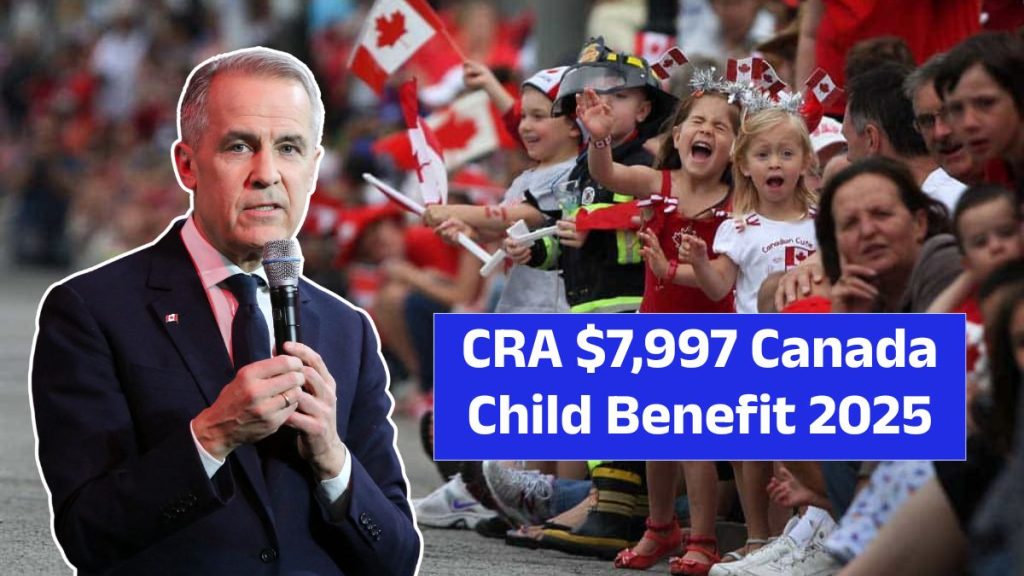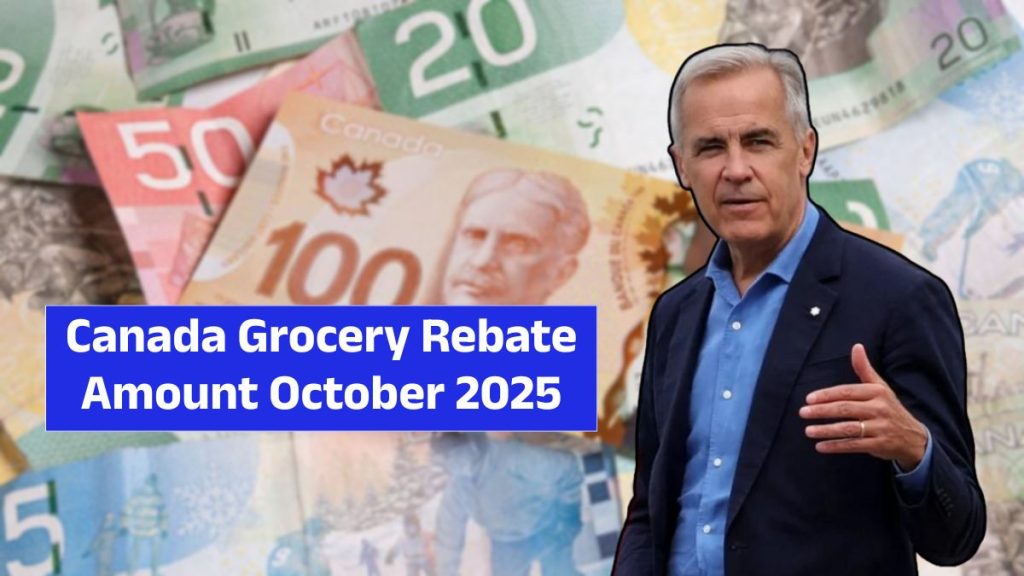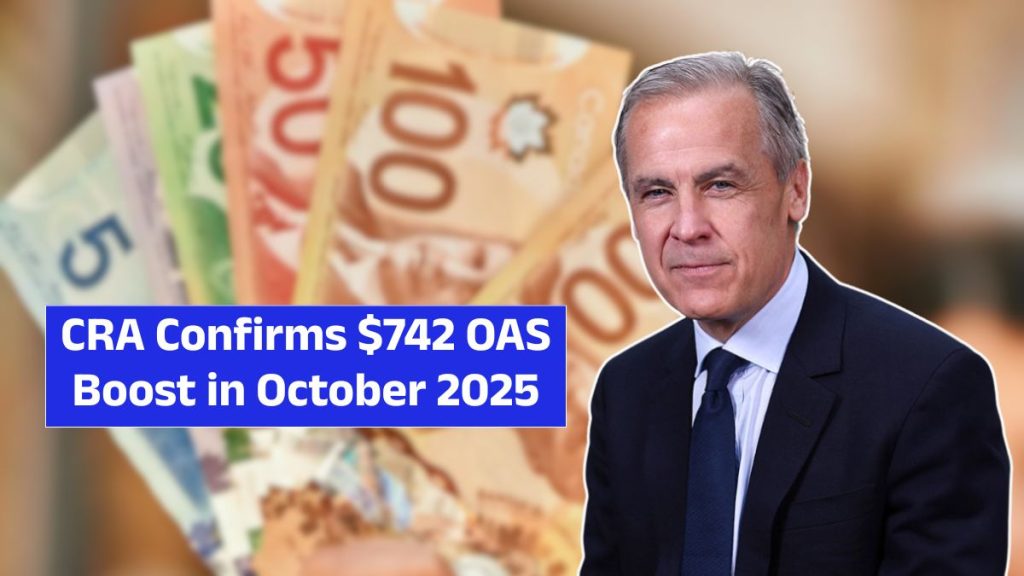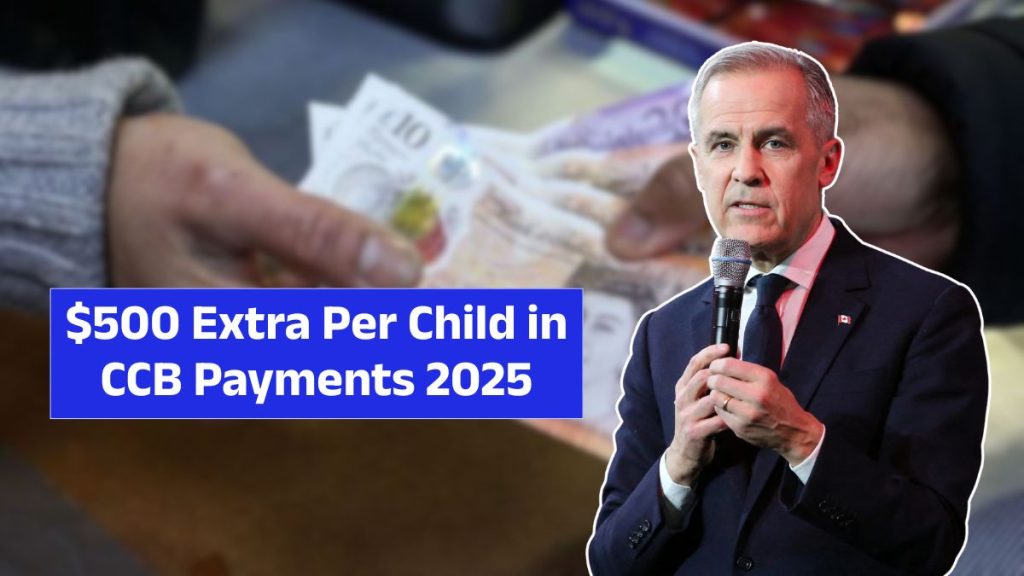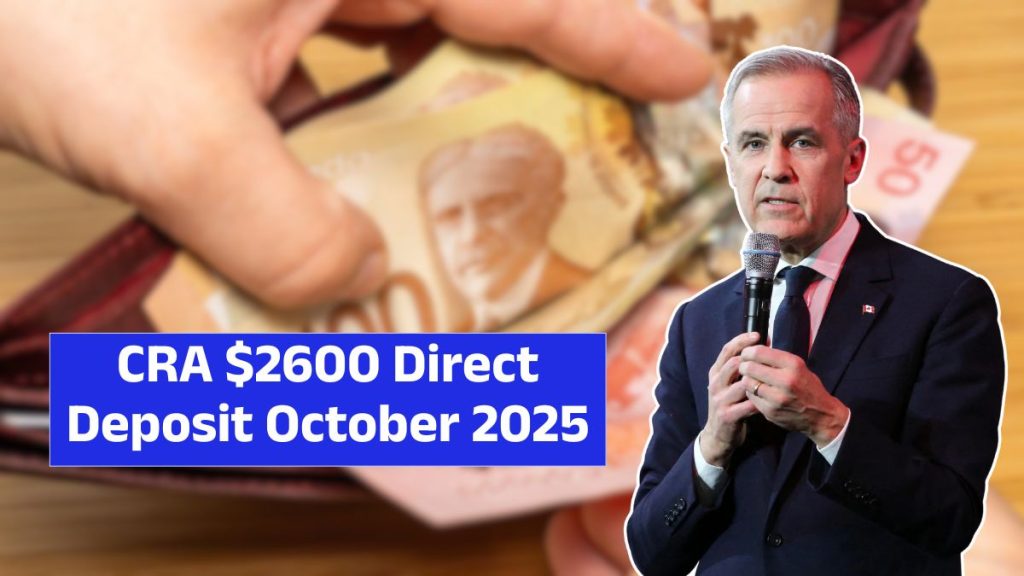The $7,997 Canada Child Benefit (CCB) 2025 is one of the most talked-about government support programs for Canadian families this year. While the number sounds exciting, not every household will receive the full amount. The program is designed to direct the most help to low- and middle-income families raising children, while higher-income households see reduced or phased-out benefits.
This in-depth guide explains eligibility, income thresholds, clawback rules, payment schedules, and real-world examples—so parents can understand exactly how much support they can expect and how to make the most of it.
What Is the Canada Child Benefit (CCB)?
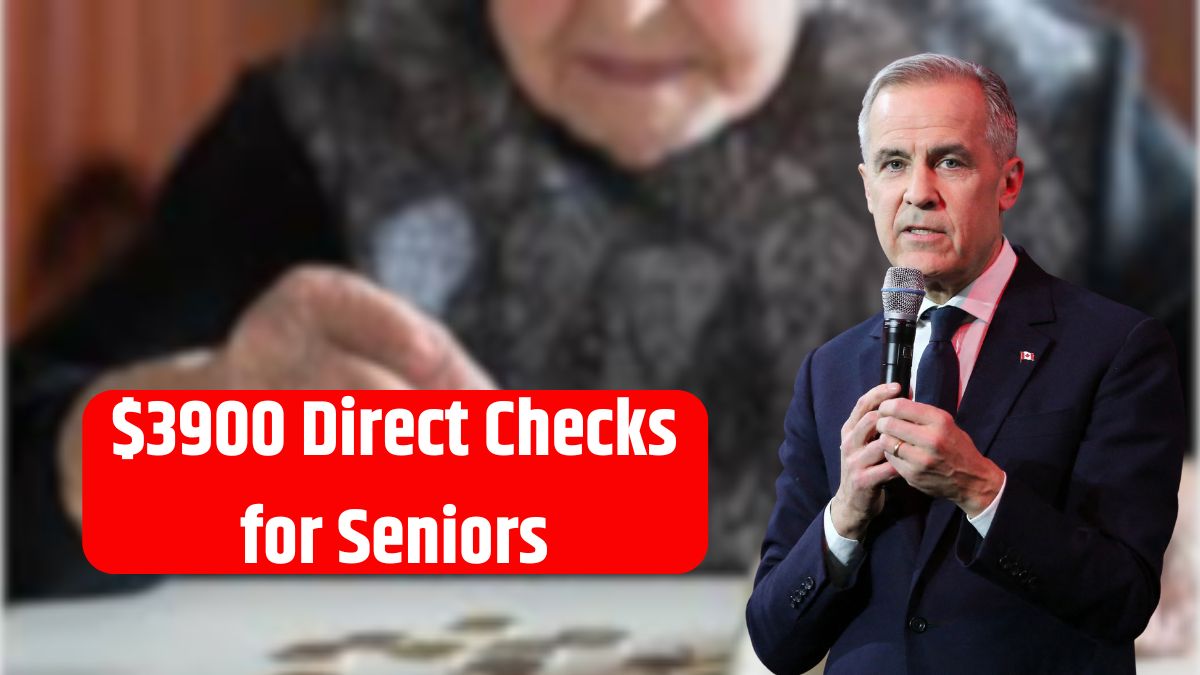
The Canada Child Benefit is a tax-free monthly payment administered by the Canada Revenue Agency (CRA) to families raising children under 18. The aim is straightforward: reduce the cost burden of raising kids, especially in an era where living costs continue to rise.
For the July 2025 – June 2026 benefit year:
- Families with children under 6 years old can receive up to $7,997 per child annually.
- Families with children aged 6–17 years can receive up to $6,748 per child annually.
These payments are deposited monthly, around the 20th, directly into parents’ accounts. Unlike tax credits, you don’t have to wait until tax season—this is immediate support throughout the year.
A Brief History of the CCB
The CCB was introduced in 2016, replacing earlier programs like the Universal Child Care Benefit (UCCB) and the Canada Child Tax Benefit (CCTB). The goal was to simplify Canada’s child support system while ensuring benefits were income-tested and targeted to families in greater need.
Since its creation, the CCB has been indexed to inflation, ensuring that payments grow gradually each year. According to Statistics Canada, the CCB has been instrumental in reducing child poverty, cutting rates from 11% in 2015 to under 5% by 2020.
Who Actually Gets the Full $7,997?
The maximum benefit is not universal. It depends on your Adjusted Family Net Income (AFNI).
- Full amount: AFNI of $37,487 or less (for one child).
- Partial benefit: AFNI between $37,487 and $81,222, with gradual reductions at a 7% clawback rate.
- Further reduction: AFNI above $81,222, with an additional 3.2% clawback.
- Phase-out: High-income families (e.g., $200,000+) are typically excluded.
This ensures the largest payments go to families who need them most.
Example Scenarios
- Single parent, $30,000 income, one child under 6 → Full $7,997.
- Couple, $70,000 income, two children (ages 3 and 10) → Partial benefits, roughly $12,000 combined.
- Family with $200,000 income → No CCB, as benefits are phased out at higher income levels.
Eligibility Checklist for 2025
To qualify for the CCB, you must meet all of the following:
- Child under 18 years old.
- You are the primary caregiver, responsible for day-to-day care.
- You live in Canada for tax purposes.
- You or your spouse are a Canadian citizen, permanent resident, protected person, or eligible temporary resident.
- You file your tax return each year, even if income is zero.
- Household income falls within eligible thresholds.
Special Situations
- Shared custody: Payments may be split between parents.
- Foster care: Months when a child is in foster care may not qualify.
- Newcomers to Canada: Must provide proof of immigration status, residency, and the child’s birth certificate.
Payment Schedule for 2025–2026
The CRA pays the CCB monthly, typically around the 20th. For this benefit year, payments fall on:
- July 20, 2025
- August 20, 2025
- September 19, 2025
- October 20, 2025
- November 20, 2025
- December 19, 2025
- January 20, 2026
- February 20, 2026
- March 20, 2026
- April 20, 2026
- May 20, 2026
- June 19, 2026
Step-by-Step: How to Apply for CCB 2025
- File taxes: Both parents must file yearly returns.
- Apply online: Use CRA My Account or submit Form RC66.
- Provide documents: Proof of residency, status, and child’s birth if requested.
- Wait for processing: Usually 6–8 weeks.
- Set up direct deposit: Ensures faster monthly payments.
Why the CCB Matters for Families
Raising a child in Canada costs an estimated $10,000–$15,000 per year. For many households, the CCB covers essentials like food, housing, clothing, and childcare.
Beyond financial relief, the CCB is considered one of the most effective anti-poverty programs in Canadian history, directly lifting millions of children out of poverty and contributing to overall economic stability through consumer spending.
Real-Life Case Studies
- New Immigrant Family: Moved in 2023, applied in 2025, with one child under 6 and $28,000 income → Full $7,997.
- Middle-Class Couple: Earning $80,000 with two children → Reduced benefit (~$10,000), covering daycare and school costs.
- High-Income Family: With $200,000 AFNI, phased out from CCB, but may benefit from RESP grants instead.
Comparing CCB with U.S. Child Tax Credit
- U.S. CTC: Up to $2,000 per child, partially refundable, income-tested.
- Canada CCB: Up to $7,997 per child under 6, fully tax-free.
While Canada’s benefit is larger, it is more tightly income-tested, making it highly targeted to low- and middle-income families.
Common Misconceptions About the CCB
- “You need to reapply every year.” False — it renews automatically if you file taxes.
- “It counts as taxable income.” Wrong — it is fully tax-free.
- “High earners get the same as low earners.” Incorrect — clawbacks reduce benefits as income rises.
Expert Advice for Parents
- File early: Late tax filing delays CCB payments.
- Budget wisely: Treat CCB as predictable monthly income, and consider setting aside a portion for RESP contributions.
- Update CRA quickly: Report custody, marital, or residency changes to avoid overpayments.
- Check My Account regularly: Track payment dates, benefit letters, and any adjustments.
Frequently Asked Questions (FAQs)
Q1. What is the maximum Canada Child Benefit in 2025?
Up to $7,997 per child under 6 and $6,748 per child aged 6–17 (July 2025 – June 2026).
Q2. Who qualifies for the CCB?
Families must live in Canada, have children under 18, file annual taxes, and meet income thresholds.
Q3. When are payments made?
Monthly, around the 20th of each month.
Q4. Is the CCB taxable?
No, the CCB is completely tax-free and does not affect other benefits.
Q5. How is the benefit amount calculated?
Based on Adjusted Family Net Income (AFNI) and the number/age of children. Clawbacks reduce amounts for higher-income households.






